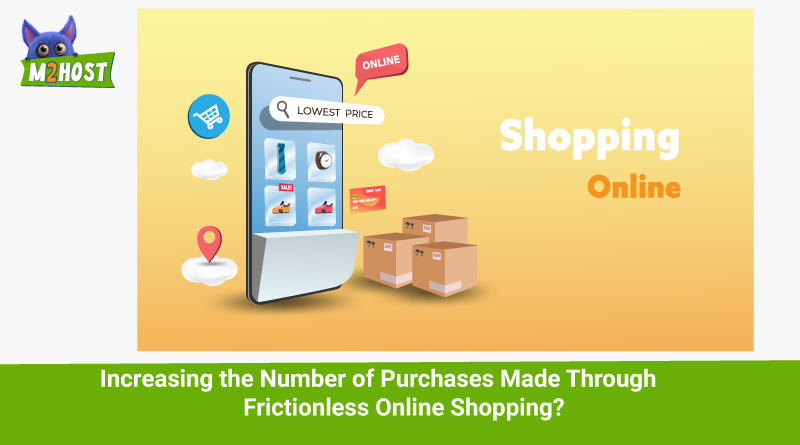At the beginning of 2020, when the world underwent a sudden transformation, customers swiftly switched their routines, and the retail industry needed to adapt new methods and technology to expedite the process of getting customers in and out of the store. This was to the advantage of both the customers and the frontline personnel.
Customers’ in-store shopping experiences could have been better because they were afraid of contracting the virus, and the government imposed strict regulations on public locations. They began with cheap online purchase that they typically purchased at nearby micro markets, department stores, and grocery stores. These products were products that they needed on a regular basis.

The initial wave of hoarding resulted in retailers falling short of their goods almost immediately. Their unhappiness was compounded by a number of factors, including a decline in consumer foot traffic and a minimal monthly sales volume, the requirement for significant adjustments to the in-store format, and the presence of obsolete equipment and technology. To summarise, customers were hoping for an experience that was as close to being frictionless in retail as possible in order to avoid being exposed to COVID in an undesirable manner.
Do you know what Frictionless Online Shopping is?
When you want a quick transaction to make things easier for customers, the friction is not in your best advantage to do so. When it comes to retail, the key to achieving seamless operations is to provide customer service that is efficient. For the goal of ensuring that the transaction goes off without any problems, it is essential to get rid of everything that could potentially get in the way. In order to achieve the goal of frictionless online shopping, it is necessary to eliminate any difficulties or pain points that customers have while shopping for products, adding them to a basket, beginning the checkout process, paying for their products, and receiving them. Whether it takes place in a physical store or on the internet, this can be accomplished through the initial encounter. A significant number of large e-commerce companies have emerged in recent years, which has made it far simpler to make inexpensive purchases online. It is equally important for owners of small businesses of any size to implement new techniques in order to maintain continuous sales both online and in local areas. This is true regardless of the size of the firm.
The Different Types of Frictionless in Retail
- The Positive Effects of Friction
Even though there must be no negative friction left, some friction can be beneficial. Customers are likely to notice intriguing deals, helpful information, attractive packaging, or a product on your shelves that they may not have noticed online when they stroll peacefully and dreamily through your store and look around aimlessly. They may also become intrigued by an in-store marketing campaign. Finding the ideal ratio between the digital and the physical is another aspect of being frictionless in retail.
- Customisation
Ultimately, customisation gives the clients a sense of exclusivity. Furthermore, technology is improving our ability to meet particular customer expectations. Personalised shopping and goods made to fit individual needs are not only popular, but also essential.
- Quick Entry & Quick Exit
Cheap online purchase should be a continuous, walk-through experience to be frictionless in retail. Reduced wait times and the elimination of lengthy line-ups are crucial. There would be no traffic, needless waiting, or stressful situations. Customers have to arrive and depart without wasting any time.
- Methods of Payment
Online payment mechanisms are replacing registers. Retail apps and mobile wallets are real! Another example is 1-click purchasing on Amazon; have you ever used it?
- Safety and Security
Customers conduct their searches, make payments, and engage in the safest environments, while store owners are less concerned about credit card fraud, bar code issues, or stealing. Customers and retailers will feel safer with frictionless online shopping as long as sensitive data is securely stored.
The Reasons why Frictionless Online Shopping Trade Continues to Exist-
The increasing acceptance of frictionless online shopping is not just an interim solution for the pandemic. As a result, it has brought about in a trend of convenience that customers will not give up any time soon. Here are four reasons why this is the case:
- Low costs associated with switching
Retailers are being forced to differentiate their products and services by customers, but the low switching costs between different retail venues are also helpful. In this post-pandemic period, businesses have come to realize the significance and advantages of adopting a hybrid model, which entails a combination of purchasing online and shopping in physical stores for day-to-day necessities. In response to the shifting dynamics, large and medium businesses all over the world are embracing an omnichannel business approach, which involves having a physical presence in addition to an online presence in order to provide an experience that is connected and focused on the customer. The omnichannel paradigm makes it possible for customers who start their shopping experience on a brand’s website to have the same experience regardless of whether they visit the brand’s mobile app, social media accounts, brick-and-mortar stores, or any other location. Additionally, the user experience is consistent across all devices, including mobile phones, tablets, desktop computers, and laptops.
- Aiming for a hassle-free, secure purchasing experience
Over the course of the past two years, customers who shop in person have shown a greater propensity to give priority to establishments that aim to facilitate the quickest possible entry and exit operations. Customers are not in a hurry to return to the traditional methods of buying because they have immensely profited from frictionless in retail or contactless shopping experiences. Although the requirement to wear a mask is being eliminated, many people continue to do so because they may want to reduce the amount of time they spend in crowds that is not essential. The most effective method of providing service to these consumers is to provide them with a seamless experience.
- Anticipating financial benefits during rise
Nowadays, consumers expect convenience stores and retailers to assist them save money because they are so cost aware. This puts pressure on those stores to cut expenses so that they can give savings to customers. Only if the merchants themselves cut labour, facilities and other expenses would it be feasible to pass the savings down to customers. Creating a seamless online shopping experience is the most effective approach to satisfy customers and cut expenses.
- Incredibly practical, one delivery at a time
Door-to-door delivery service providers are seeing an increase in interest; several of them are generating millions of dollars in capital. Even while some of these service providers have been operating for some time, the significant shift in the dynamics of consumption has produced a high-demand market that was not as large prior to the epidemic.
- Addressing Issues with Traditional Physical and Digital Retail
Almost everyone who made a cheap online purchase or went in-store experienced delivery delays and other transportation problems brought on by the Covid-19 epidemic. It used to be fairly common for individuals to order something online and then drive to the store to pick it up just to discover that it wasn’t in stock. While service providers strive to create a seamless model, experts are examining ways to improve and streamline the physical/digital divide. Two instances include an increase in contactless pickup and delivery and real-time inventory changes.
- How to recognise and interact with coupon users
Identifying the various customer types who visit your retail store and the reasons behind their inability to convert is the first step towards guaranteeing frictionless shopping. After that, you should classify these customers based on their behaviour, buy triggers, and other attributes as part of your on-site strategy. Using price-sensitive buyers as an example. Although they wish to buy anything, these consumers are always on the lookout for deals or less expensive options.
Once they have added things to their basket, they usually open a new tab to search for savings on other websites and hunt for coupons on the checkout page if they are not discovered. When it comes to the checkout page, these customers will attempt to use at least two or three coupon codes that they discover on retail affiliate or discount websites. Get a sale if any of them succeed. You lose one if none of them function. Exiting your website and returning with coupons to try is a blatant sign that a customer is price-sensitive. You have the perfect chance to engage these customers and reduce the friction brought on by disappointment at that point.
Conclusion-
While the number of people purchasing online skyrocketed during the pandemic, it appears that shopping in physical stores is gradually reverting to its regular state. It is likely that the majority of individuals will choose to go with a hybrid shopping experience that is not only convenient but also saves them time and money. The greatest way for businesses to move forward is to create a store that is frictionless. In order to provide a seamless experience for their customers, merchants have a tremendous chance to bring the most effective digital insights into their physical reality and integrate both of these strategies. Using an omnichannel architecture that connects all channels into a seamless whole, retailers are required to modernise their traditional brick-and-mortar locations. The customers want to be able to browse anywhere, make purchases anywhere, and have their orders fulfilled anywhere, and the retailers need to be able to provide all three of these facilities at scale.


